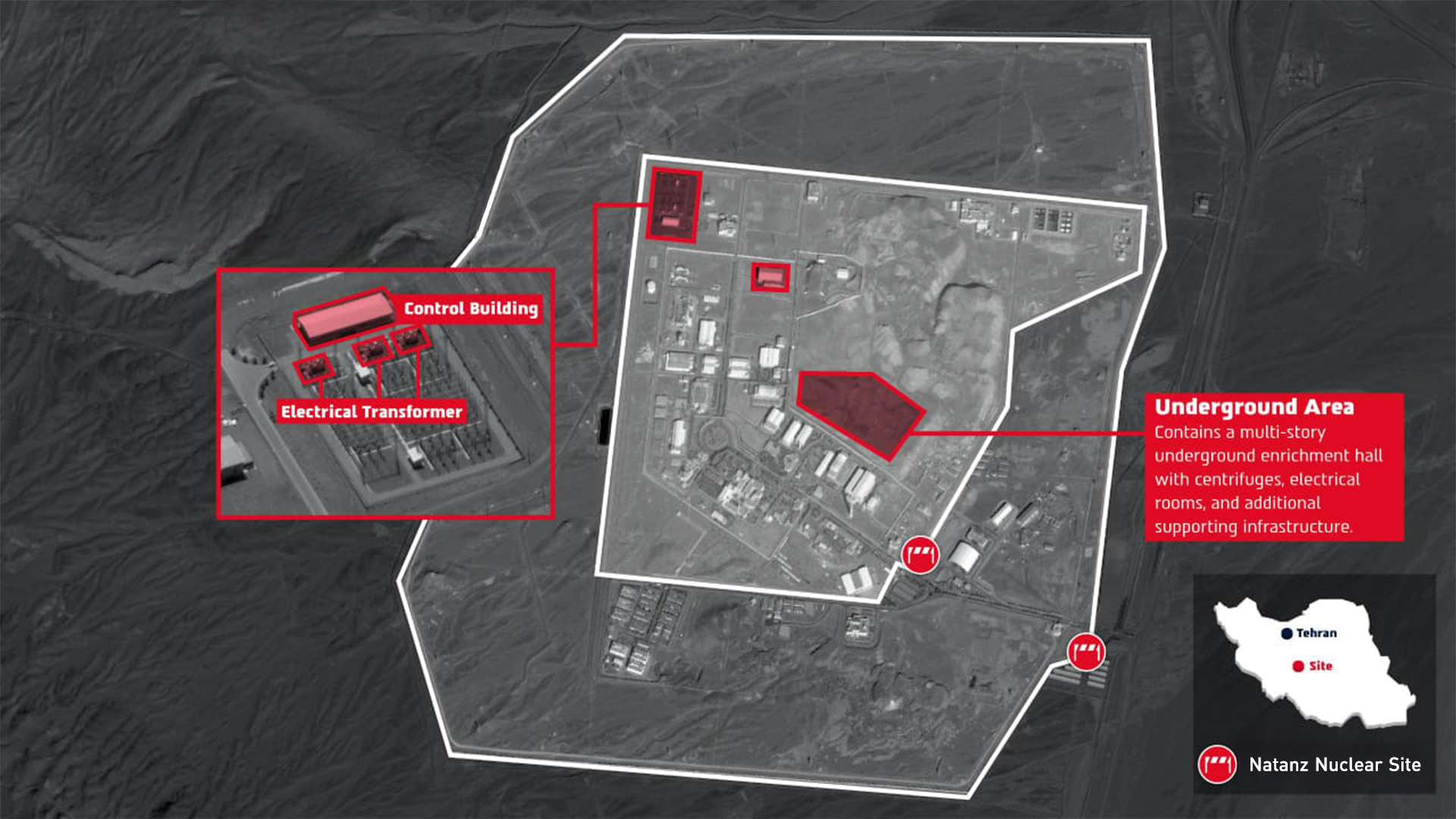Powerful Quake Shakes Iran's Natanz Nuclear Site, Reviving Anxieties from Recent Strikes
A 5.3-magnitude earthquake struck near Iran's Natanz nuclear facility, reviving concerns over the site's stability after recent Israeli and U.S. strikes targeted its underground enrichment infrastructure.

ERBIL (Kurdistan24) – A powerful earthquake measuring 5.3 on the Richter scale struck on Friday morning, in the Zavari area of eastern Isfahan Province, jolting the vicinity of Iran’s Natanz nuclear complex and spreading across the borders of Qom and Tehran provinces.
Iranian state media reported that the quake, recorded at a depth of 10 kilometers, was felt strongly in nearby provinces. The Tasnim News Agency, close to the Islamic Revolutionary Guard Corps (IRGC), confirmed the tremor, stating that residents of both Qom and Tehran felt the force of the quake. Authorities gave assurances that no casualties had been reported, though no details were provided on potential material damage.
Iran’s seismic vulnerability is well-documented. Located atop multiple tectonic plate fault lines, the country is one of the most earthquake-prone nations in the world. Its most devastating modern tragedy occurred in 1990, when a 7.7-magnitude earthquake in northwestern Iran claimed nearly 37,000 lives and left 100,000 others injured.
The Natanz facility, already synonymous with nuclear controversy, has been the target of repeated military strikes in recent Months. On June 17, 2025, Israel carried out a major offensive against Iran’s nuclear infrastructure, with the UN nuclear watchdog later confirming that direct impacts had been sustained underground at the Natanz site. Initially, the International Atomic Energy Agency (IAEA) assessed only above-ground damage, including to uranium enrichment halls and power infrastructure. However, continued satellite analysis revealed “direct impacts” on subterranean enrichment facilities, marking a significant blow to Iran’s uranium program.
Natanz is home to nearly 70 cascades of centrifuges used for uranium enrichment, a process central to Iran’s controversial nuclear activities. While Tehran maintains that its program is peaceful and directed toward energy and medical uses, the enrichment levels—pushed as high as 60 percent, far above the 3.67-percent cap of the 2015 nuclear accord—have fueled international alarm over potential weapons development.
IAEA Director-General Rafael Grossi announced at the time his readiness to travel immediately to Iran, stressing the urgency of independent inspections.
Less than a month later, on July 5, 2025, U.S. President Donald Trump raised the stakes. Speaking aboard Air Force One, Trump boasted that U.S. airstrikes had “totally demolished” Natanz, along with other key Iranian nuclear sites at Fordow and Esfahan.
“If they were to do it again, they might as well start in a different location because that location is totally demolished,” Trump said, warning that any attempt by Iran to rebuild would invite a “problem” and elicit further American retaliation. “We wouldn’t allow that to happen,” he stated firmly.
Framing the strike as a centerpiece of his foreign policy, Trump called it a “great success” that had “blown [Natanz] to pieces” and “set back permanently” Tehran’s nuclear ambitions. He connected the action to broader regional security discussions, including his upcoming meeting with Israeli Prime Minister Benjamin Netanyahu.
For Iran, Natanz remains a focal point of vulnerability. Once a showcase of nuclear ambition, it is now a symbol of both natural fragility and geopolitical assault. The 5.3-magnitude earthquake that struck near the facility underscores not only Iran’s precarious geography but also the layers of instability surrounding a site already scarred by international attacks.
With Washington and Tel Aviv having declared the facility obliterated and Tehran persisting in its enrichment program, Friday’s earthquake adds another tremor—literal and figurative—to an already fraught landscape.
